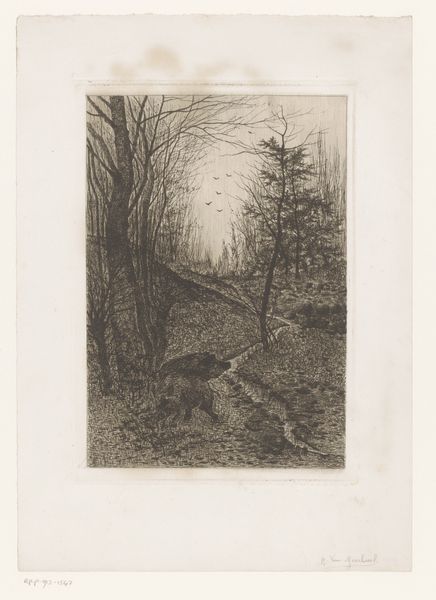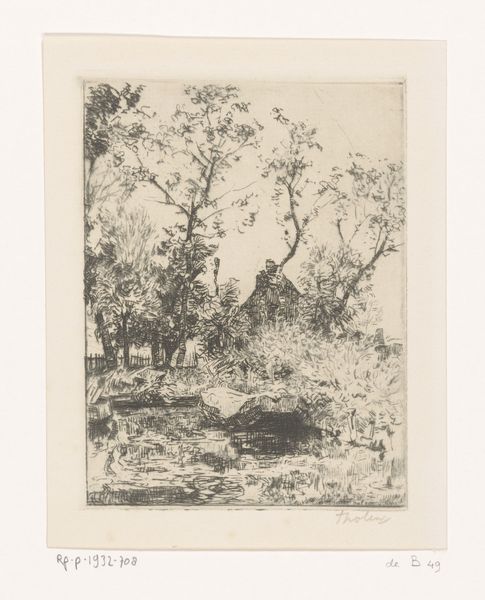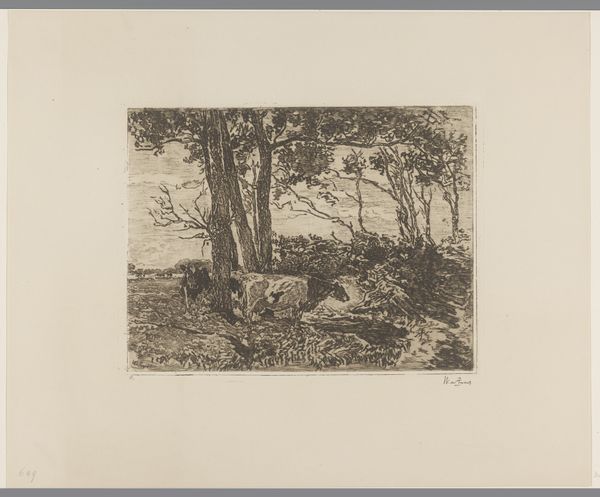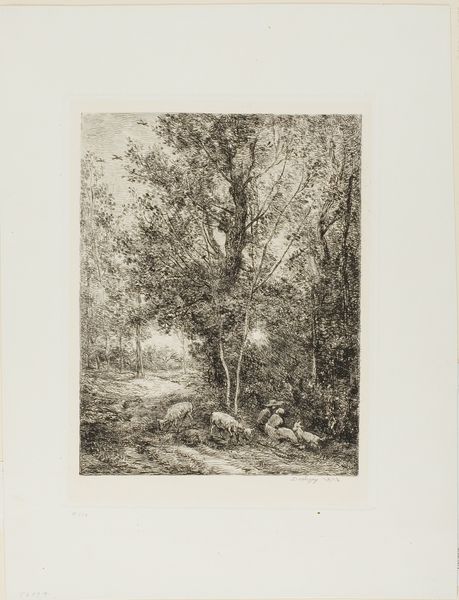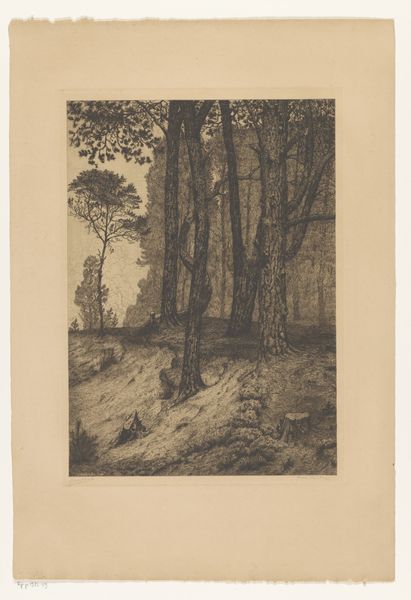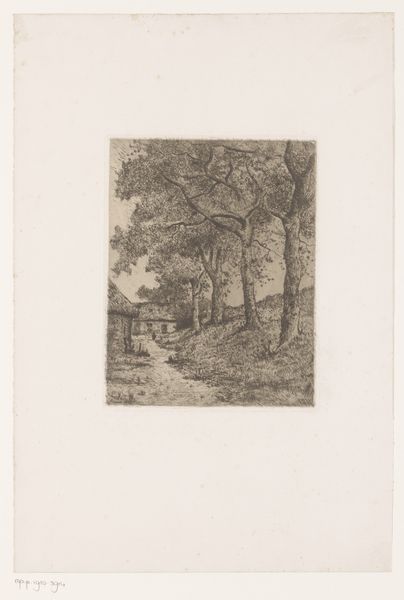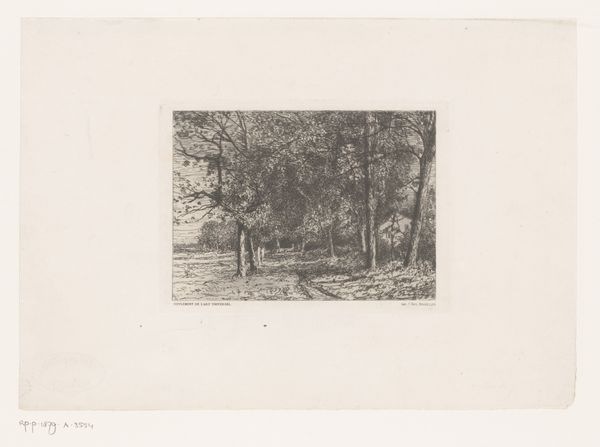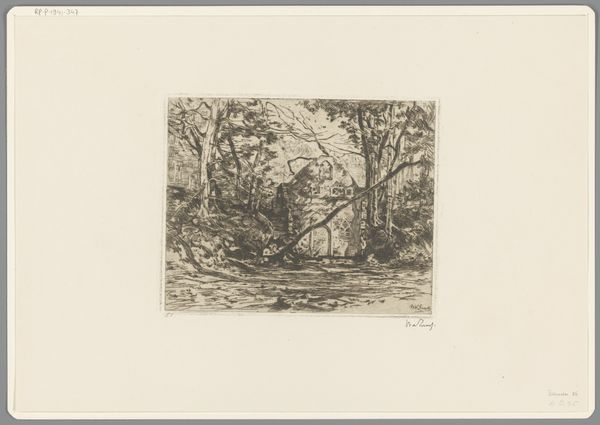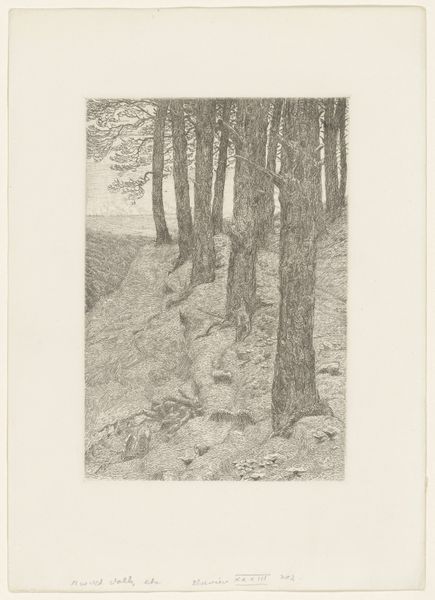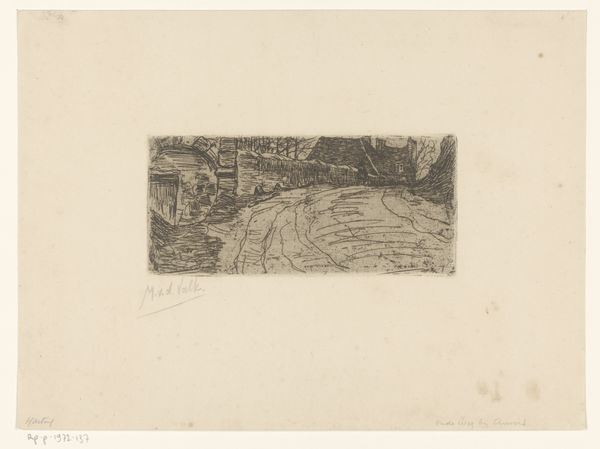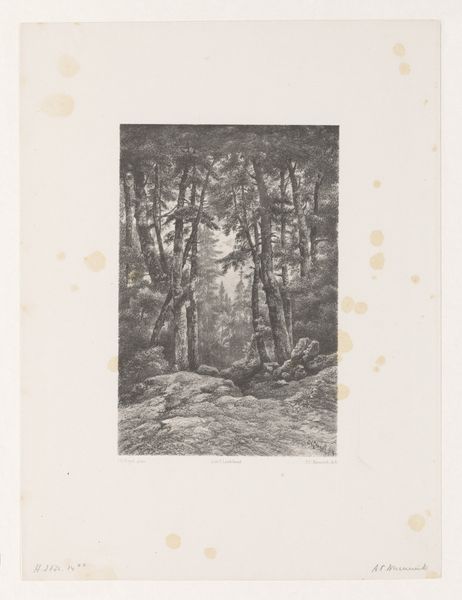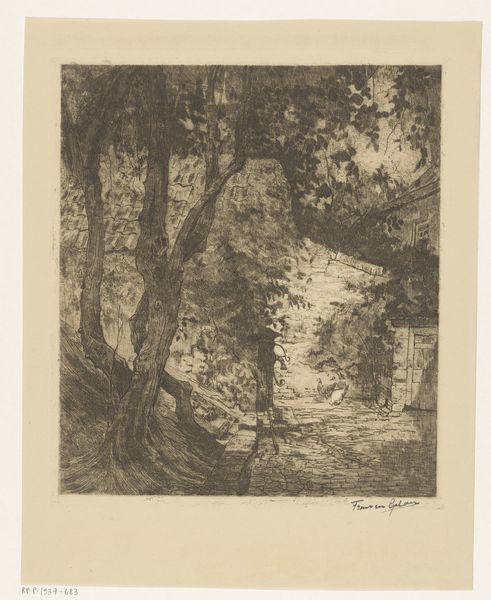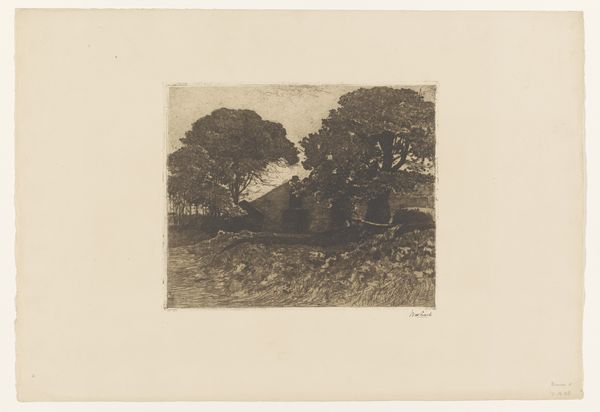
print, etching, engraving
# print
#
etching
#
landscape
#
engraving
#
realism
Dimensions: 11 13/16 x 9 3/4 in. (30 x 24.77 cm) (plate)17 5/8 x 13 1/8 in. (44.77 x 33.34 cm) (sheet)
Copyright: No Copyright - United States
Curator: "The Meadow," an etching and engraving by Philip Little created in 1927, offers us a fascinating glimpse into the artist's engagement with the landscape tradition. Editor: It does, doesn’t it? You know, my first thought was… peace. A very quiet kind of peace. It's all these little dark lines making something lovely and light. Like secrets whispered in the forest. Curator: That feeling of quietude resonates deeply. Little's choice of subject—a tranquil meadow, likely somewhere in New England given his background—situates this work within broader discourses about the pastoral ideal and humanity's relationship to nature during a time of rapid industrialization. This art period served as a refuge, reflecting yearning to reconnect with the simplicity of a nature, that felt progressively elusive, almost mythical. Editor: Industrialization… right. But looking at it, I think of slowing down, of noticing things – the way the light catches the water, even that lone duck, just chilling. Does the landscape remind me of the transcendentalists? Maybe it’s my own projection because for me art always works like this… the world meeting yourself. Curator: Your perception echoes what art historians and ecocritics would call the representation of the American sublime, but perhaps in a more intimate register. Rather than portraying overwhelming grandeur, Little captures a scene of quiet, domestic beauty, which arguably also speaks to the rise of environmental awareness and conservation efforts in the early 20th century. It is an approach that we also find in many woman photographers and painters of the period as a political reflection on the environment. Editor: A quiet revolution, perhaps! So the duck... any theories? Just a duck, or symbolic duck, like an omen? Curator: Symbolism is definitely present. The duck may signify simplicity or a harmonious balance, or an environmental political argument since it exists in harmony in a landscape menaced by a new industrial world. Its presence within this very carefully rendered landscape might actually be the entire story. Editor: Wow, I suddenly feel a lot more for that duck! Art makes us reflect a little bit better! Thanks for this conversation! Curator: Likewise, it's through considering multiple perspectives like yours, the intersectional viewpoints, that these older pieces can speak more clearly about contemporary realities.
Comments
No comments
Be the first to comment and join the conversation on the ultimate creative platform.
